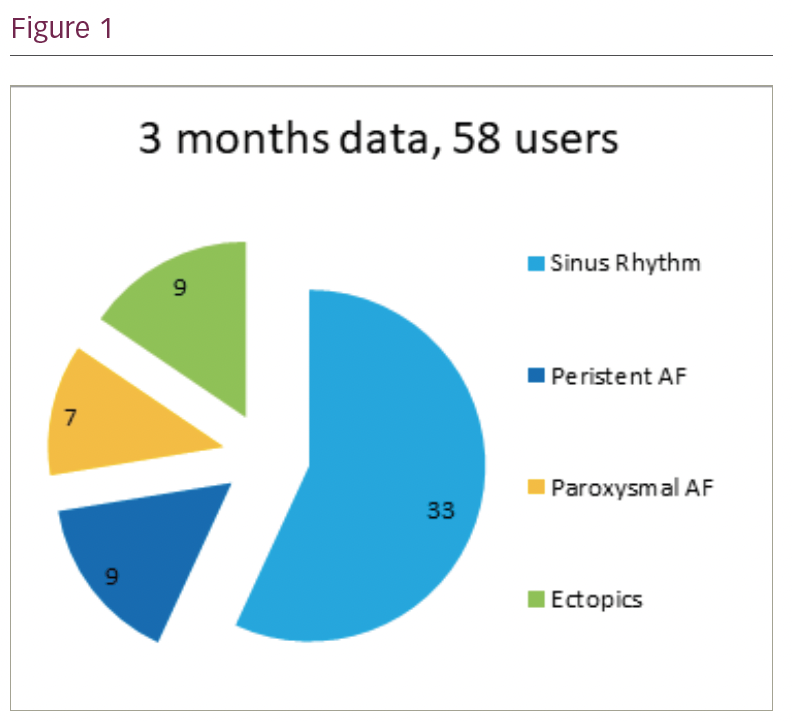The COVID-19 pandemic has had a major impact on how Arrhythmia services are run throughout the UK. There was a need to quickly establish remote clinics without access to diagnostics such as ECG monitoring. Traditionally patients were seen by Arrhythmia nurses in a face to face setting with 12 lead ECG recording available. We set out to trial a smartphone app called Fibricheck for follow up patients in Arrhythmia Clinic. Charitable funds were made available for a 3 month trial. Patients were telephoned a week prior to the remote clinic and asked to record 4 traces a day for 7 days. The data was then available to the Arrhythmia Nurse in clinic to assist with rhythm recognition and potential diagnosis. The app was found to be particularly useful for patients post cardioversion and when a diagnosis of ectopic activity or paroxysmal AF was suspected.
It was also useful in titrating medication as heart rate data could be averaged out easily. Patient feedback has been very positive with over 90% of users finding the App to be very useful in confirming diagnosis and heart rate. Use of the App avoided patients having to attend a health care setting for a monitor or an ECG and all follow up arrhythmia clinics were conducted by telephone. We are currently trying to access funding to extend the trial into standard practice, as it use points to a cost saving on outpatient rooms and travelling costs for patients.








